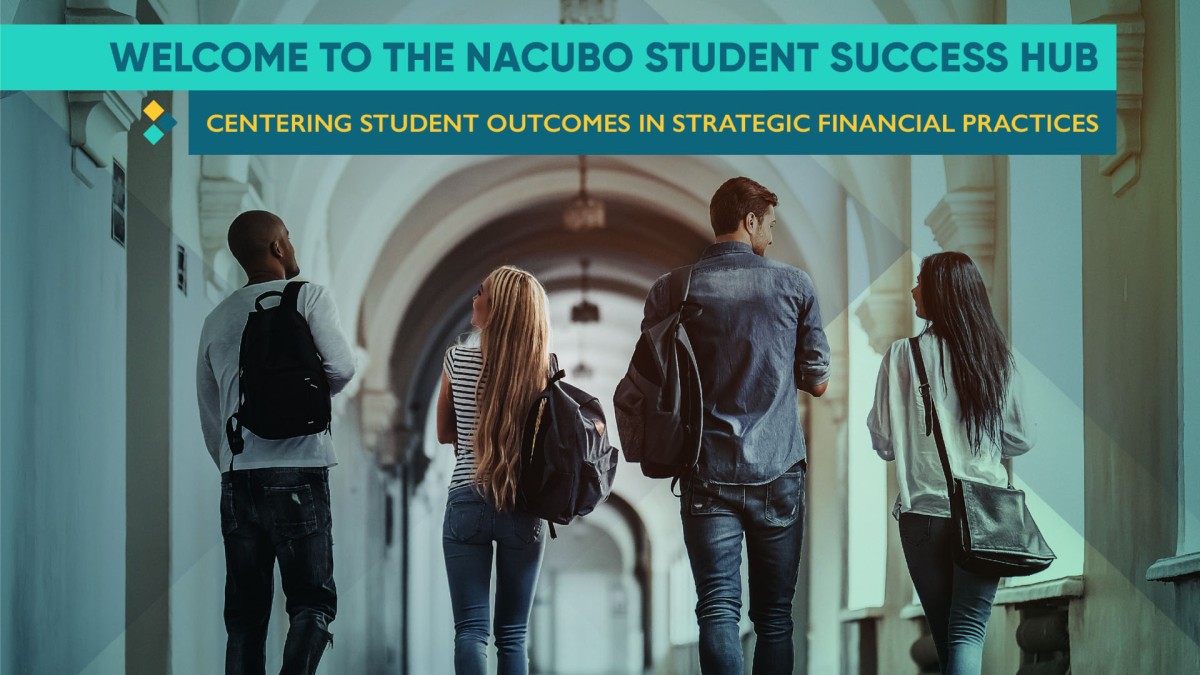
How Postsecondary Institutions Are Using the NACUBO Student Success Hub to Align Finances With Learner Needs
Colleges and universities are under increasing pressure to improve learner outcomes, particularly for learners from low-income backgrounds. Business officers and financial administrators, such as members of the National Association of College and University Business Officers (NACUBO), face significant challenges in aligning financial practices with student success goals, often grappling with unpredictable enrollment and unreliable data from disconnected reform efforts. To overcome these obstacles, institutions must strategically allocate financial resources, time, staffing, and capacity to better support student needs and drive improved outcomes. The NACUBO Student Success Hub (the Hub) offers a practical solution to streamline these financial strategies.
Launched in July 2024, the Hub provides a comprehensive suite of toolkits designed to integrate student-centered financial strategies into broader institutional finance plans. Funded in part by Ascendium and developed over two years with 26 institutions — including community colleges, Historically Black Colleges and Universities, and Hispanic-Serving Institutions — the Hub helps institutions optimize financial practices to promote equitable student outcomes. It empowers them to prioritize resources, scale effective programs, and phase out unsustainable investments, all with student success at the forefront.
The toolkits are structured around three focus areas: data management, financial resource optimization, and student-centered planning. Each toolkit is designed for maximum impact, providing an overview, implementation instructions, and real-world case studies to guide institutions in overcoming specific challenges.
Institutions using the Hub are already seeing transformative results.
- Alamo Colleges District (San Antonio, Texas): By using the Budget Equity Blueprint, the district re-evaluated its budget practices and redirected $2 million toward a new advising strategy. This commitment to data-driven resource distribution has enabled district colleges to offer more targeted advising support, helping learners receive the personalized guidance they need to succeed.
- California State University, San Bernardino: Through the Hub’s guiding questions for student-centered decision-making, the university revised its debt forgiveness policies, forgiving nearly $2 million in student debt. This has led to higher re-enrollment rates, helping the institution meet its fall enrollment targets.
- Stillman College (Tuscaloosa, Alabama): The Data Ecosystem Assessment helped Stillman address foundational data infrastructure issues, fostering a culture of data literacy and continuous improvement. These efforts are expected to support better student outcomes over the long term.
At Cincinnati State Technical and Community College, the implementation of the NACUBO Student Success Hub marked a pivotal shift in how the institution approached student success initiatives. Christopher Calvert, the former Chief Business Officer, initially faced challenges in identifying best practices in higher education finance, noting that the lack of established methods and a difficult fiscal environment hindered funding for essential programs aligned with the institution's mission. However, the tools from the Student Success Hub allowed for a more objective evaluation of investments, shifting the conversation from potential sacrifices to a clearer understanding of fiscal implications and student outcomes.
“The tools themselves, documentation accompanying tools, and support infrastructure allow institutions across the spectrum with many different systems to implement them successfully,” Calvert says. Although he has since moved to another institution, he encourages others to try these tools, believing they will establish best practices in budgeting, funding, and evaluating student success initiatives.
Explore the Hub’s Use Cases to learn how more institutions have benefited from it.
As colleges and universities increasingly integrate these tools into their operations, the Hub will continue to bridge the gap between financial strategy and student success, driving lasting improvements in student outcomes.
“We hope more institutions will adopt these resources, which enable leaders to better align financial practices with student success goals,” says Ascendium Senior Program Officer Sue Cui. “By utilizing these tools, institutions can navigate today’s challenges and create meaningful, lasting change for their students.”


